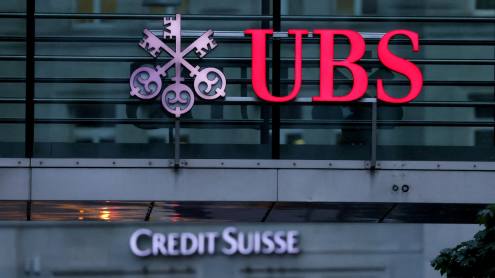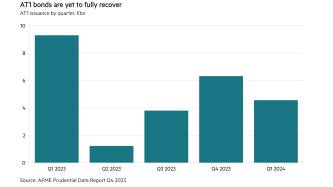By the time it celebrates a century as a republic in 2023, Turkey wants to be one of the world's 10 largest economies. It is aiming to have gross domestic product (GDP) per capita of $25,000 and $500bn-worth of exports, annually. Currently, it is the world’s 17th biggest economy and both its GDP per capita and annual exports stand at less than half their targets at $10,500 and $153bn, respectively. GDP growth in 2012 was a modest 2.2%.
Editor's choice
If Turkey is to achieve its ambitious goal before the 2023 deadline, it has some obstacles to overcome. But it seems the country is on the right track.
“The government’s policies and the central bank’s efforts have become influential in transforming Turkey from a boom-bust economy to a more stable one,” says Nilufer Sezgin, chief economist at Istanbul-based Erste Securities.
Ratings on the rise
In 2012, Fitch upgraded Turkey to investment grade. In April 2013, Standard & Poor's (S&P) raised Turkey’s foreign currency sovereign credit rating one notch to BB+.
“Since November 2011, standalone credit profiles of large Turkish banks are at BBB-,” says Göksenin Karagöz, the associate director of financial services ratings for central and eastern Europe, the Middle East and Africa at S&P. “As per our methodology, ratings of banks are capped by our foreign currency ratings on Turkey because of the high correlation between banks’ creditworthiness, the operating environment – owing to lack of geographic diversification as [Turkish banks] generate their revenues almost entirely in Turkey – and banks’ direct exposure to the Turkish sovereign through government bonds and bills."
Mr Karagöz is confident that Turkey can continue on its growth trajectory. “It is not driven by raw materials nor few major sectors such that when they stall the whole economy stalls," he says. "It was neither a real estate boom as in Ireland or Spain that propelled the economic growth nor a ballooning public deficit, as in Greece and Portugal. For these reasons, I believe, foreign investors will increasingly focus on longer term investment opportunities [rather than portfolio investments] in Turkey.”
Achilles heel
Turkey’s Achilles' heel is its current account deficit. In the first two months of 2013, it amounted to $10.94bn, up by $956m from the previous year. The central bank attributed this to an $844m increase in the country's foreign trade deficit (which stood at $11.5m) and a $63m decline in net services income (which was $1.33m).
Fuelling the current account deficit is the country's savings gap and its energy bill of about $55bn (mainly comprising oil and gas). Savings are short term, so foreign savings are imported to fund investment spending as they have a longer maturity, says Hakan Ates, the CEO of DenizBank.
The country is also reliant on foreign capital to fund its domestic retail credit demand. According to Moody's, Turkey funded its growing domestic retail credit demand “through a higher reliance on wholesale funds". Consequently, the system’s loan-to-deposit ratio increased from 81% in 2009 to 106% in 2012.
“It is because of this gap that the country depends on foreign capital, which makes it vulnerable to global risk perceptions. However, it is not possible to solve this problem in the short term, so we have to live with a savings gap for some time,” says Ms Sezgin.
The government has also reformed private pension schemes to increase long-term savings. As of 2013, it matches 25% of the contributions up to Tl1000 ($553) per month. “Banks utilise all necessary tools to serve private pension products through their distribution network,” says Mr Ates.
Akbank, for instance, started a campaign in 2012 to motivate primary school children to save money. “We received pedagogic training so we could relate to the children and catch their interest in the classroom. Saving is a habit. The sooner we start, the more future generations will save,” says Galip Tozge, the retail banking executive vice-president at Akbank.
Strong base
According to Mr Ates, the Turkish banking system is immune to the global and regional financial shocks. Indeed Turkey, along with Canada and Australia, were among the few Organisation for Economic Co-operation and Development countries that did not need banking bail-outs following the global crisis.
Total bank assets amounted to approximately 96% of GDP at the end of 2012; total loans to GDP amounted to approximately 56%. Capitalisation metrics remained “sound”, according to Moody’s, with a Tier 1 capital ratio of 14.5% and total capital adequacy of 16.5%.
“The system is resilient to external shocks, having neither toxic assets nor hidden off-balance-sheet liabilities. The leverage, as an indication of risk level assumed, is very low. Turkish banks’ assets are only 7.5 times their equity,” says Mr Ates.
Consequently, this strong capital base allows for digesting occasional realisations of risk on a bank basis without resulting in system-wide problems. The capital strength is sustainable because it stems from a profitability averaging 19% in terms of return on equity (ROE) between 2005 and 2012, which also enhances the system’s lending capacity and growth.
Outside interest
One area that lets the country down is foreign direct investment (FDI). In 2012, FDI inflow amounted to $12.4bn, or 1.6% of GDP. The majority of FDI inflows go into the country's banking system. Recently, for example, Lebanon's Bank Audi opened a new branch in the country and Qatar National Bank bought a majority in local lender Alternatifbank.
If ROE of 15% is achieved by these banks in the next three years – a conservative estimate given the average ROE of 16.7% recorded by Turkey's banks in the past five years – and profits are reinvested, instead of added to the capital, risk-weighted assets could rise by $720bn in the next three years, says Mr Ates.
“This is more than the sum of total banking assets of the Czech Republic, Hungary, Ukraine, Romania and Bulgaria. Foreign banks’ appetite for the Turkish banking sector is still high. They will always look for merger and acquisition opportunities in the banking sector in this country," he says.
Political angle
John McCarthy, chairman of ING Bank-Turkey is cautious about the future of the Turkish banking sector. “Much like the US, the country is polarised politically. The difference being in the US, the institutions are embedded. Here, the institutions are still relatively young and checks and balances are not in place,” he says.
He adds that the country is still a young democracy, with a 700-year history of imperialism and less than 100 years of democratic rule.
“Turkey is in a terrible neighbourhood. Everybody around Turkey has problems. Inside Turkish society, there is a lot of dynamism going on. The tectonic plates are constantly shifting. I don’t think you can say where Turkey is going to go yet. But change is what defines Turkey. For the most part it is positive,” says Mr McCarthy.











